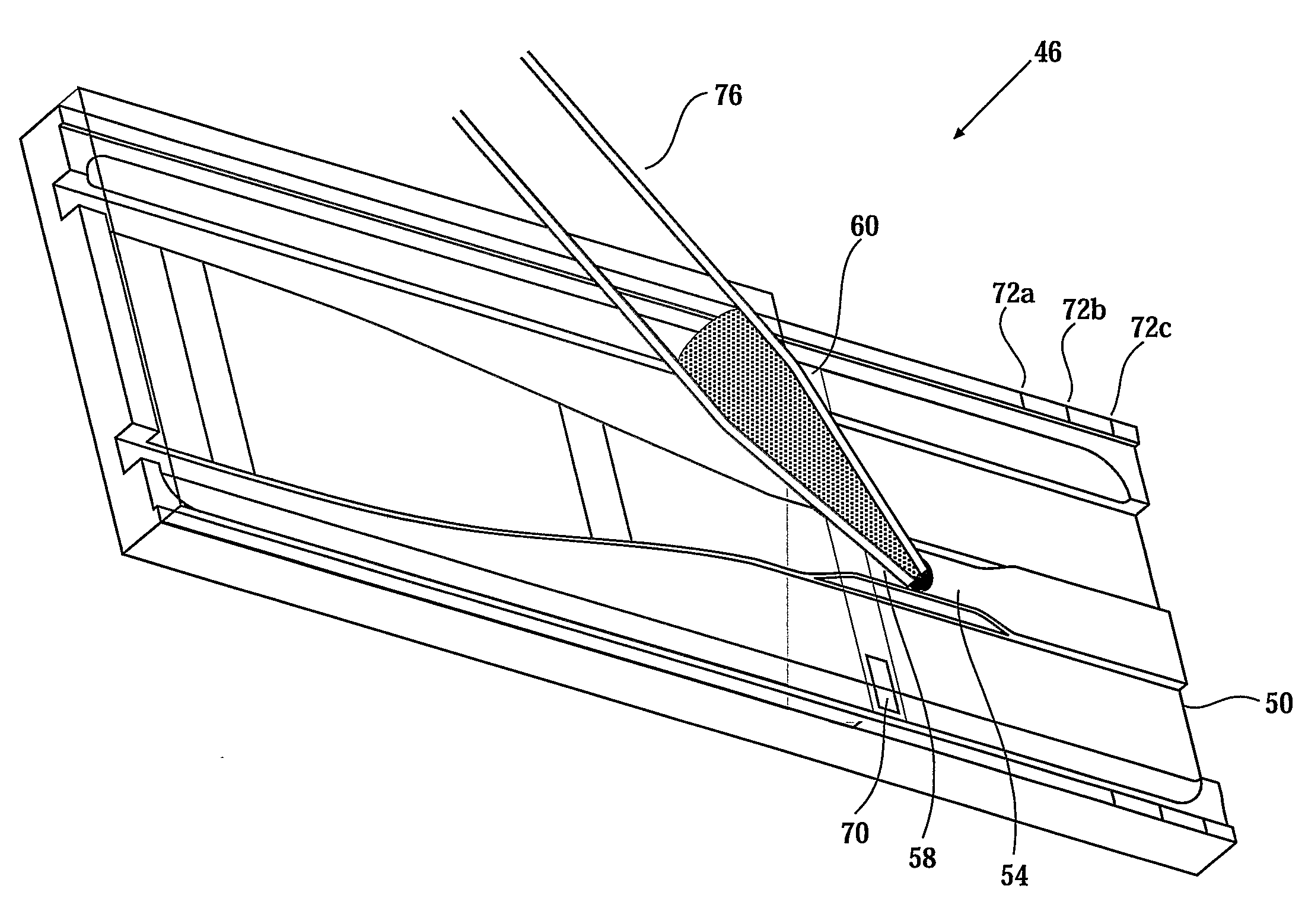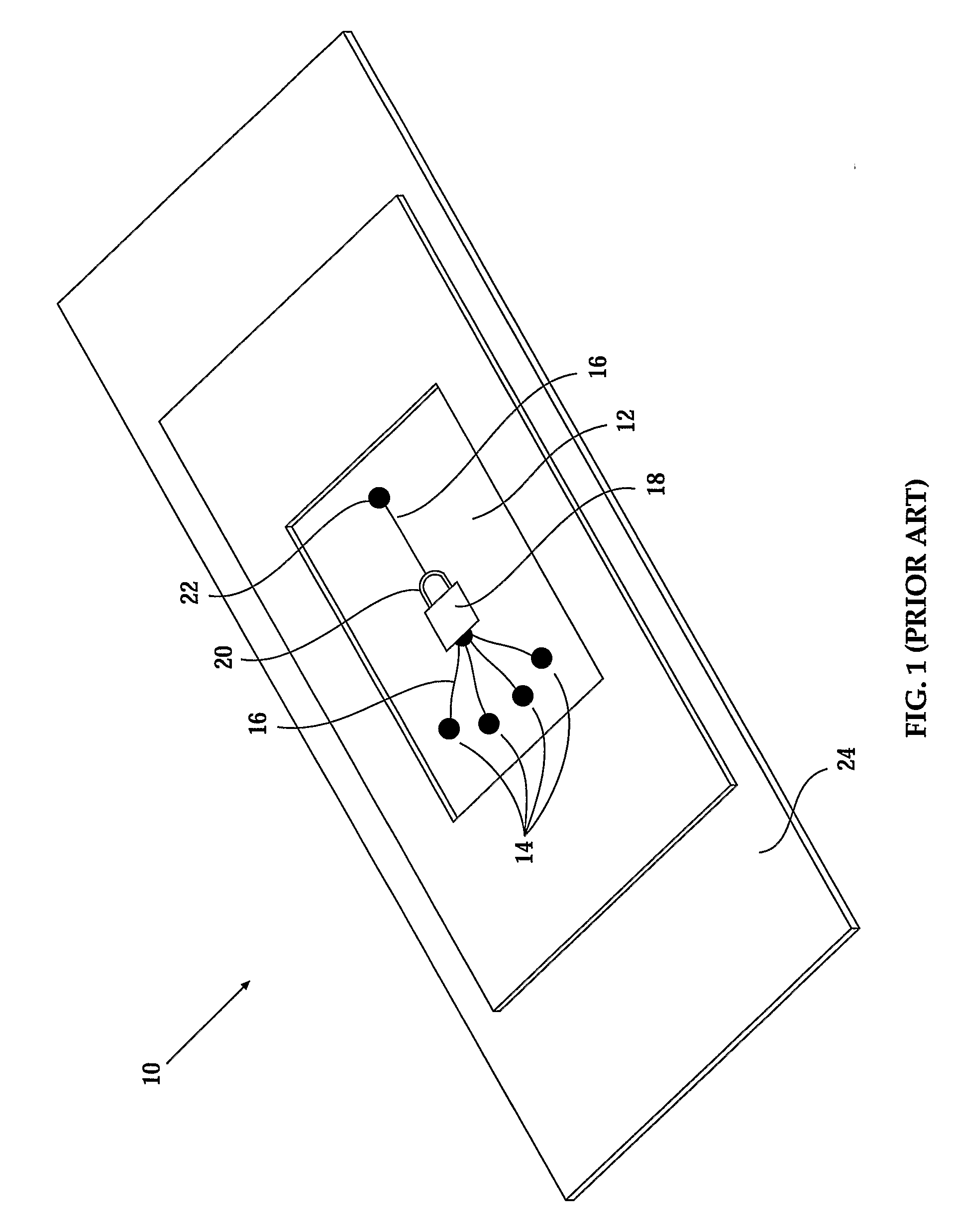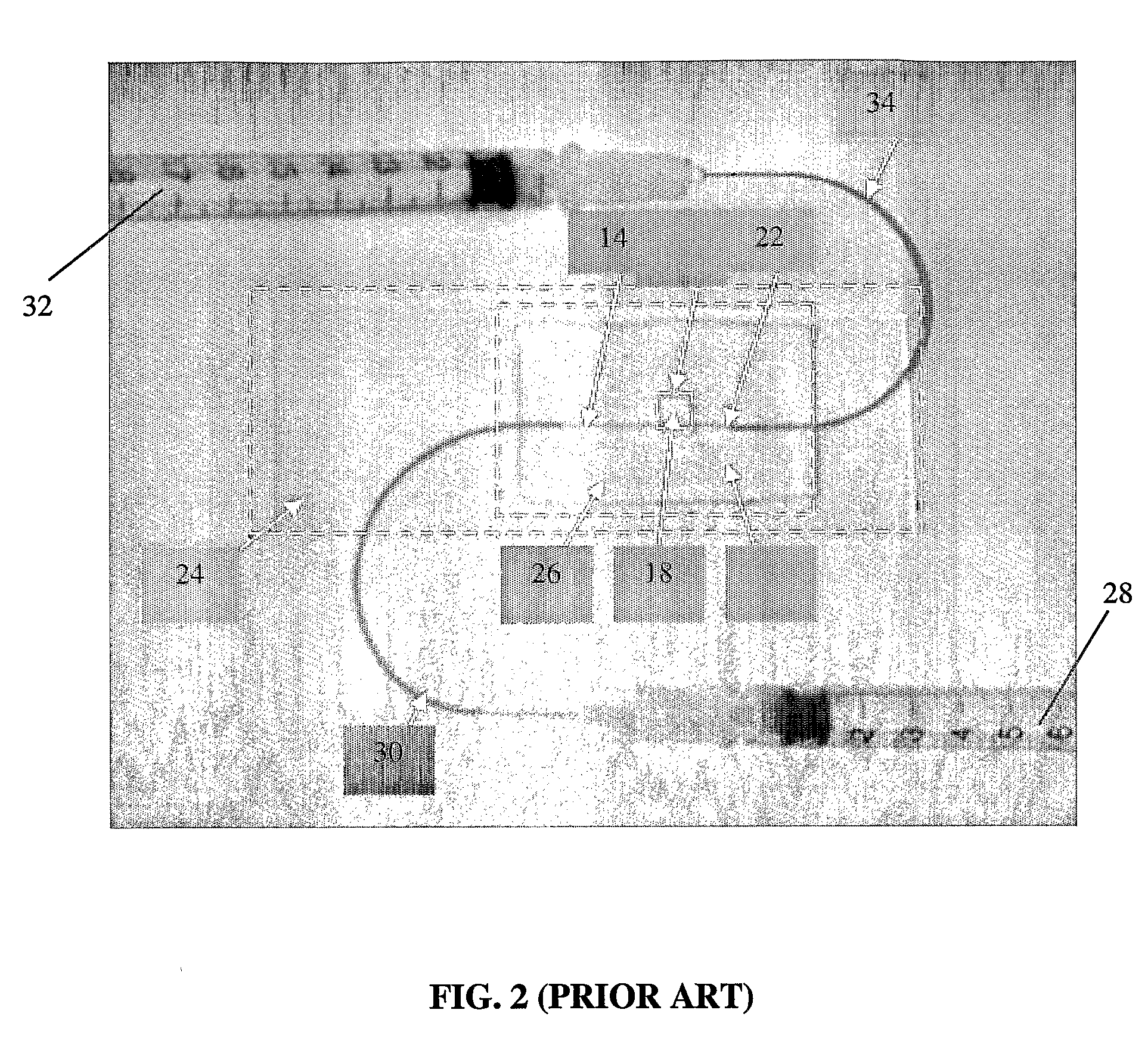Device for Studying Individual Cells
- Summary
- Abstract
- Description
- Claims
- Application Information
AI Technical Summary
Benefits of technology
Problems solved by technology
Method used
Image
Examples
Embodiment Construction
[0085]The present invention is of a picowell-bearing device for the study of cells including a picowell array and a fluid reservoir in fluid communication with the picowells through capillary channels. The present invention is also of a picowell-bearing device for the study of cells including a picowell array and a movable lid. The present invention is also of an automatized method for studying cells. The present invention is also of a device for the automatized study of cells including a picowell-bearing device having a picowell array, a moveable lid associated with the picowell-bearing device, a lid-moving component, at least one fluid dispensing component and a control system configured to operate substantially automatically.
[0086]The principles and uses of the teachings of the present invention may be better understood with reference to the accompanying description, figures and examples. In the figures, like reference numerals refer to like parts throughout.
[0087]Before explaini...
PUM
 Login to View More
Login to View More Abstract
Description
Claims
Application Information
 Login to View More
Login to View More - R&D
- Intellectual Property
- Life Sciences
- Materials
- Tech Scout
- Unparalleled Data Quality
- Higher Quality Content
- 60% Fewer Hallucinations
Browse by: Latest US Patents, China's latest patents, Technical Efficacy Thesaurus, Application Domain, Technology Topic, Popular Technical Reports.
© 2025 PatSnap. All rights reserved.Legal|Privacy policy|Modern Slavery Act Transparency Statement|Sitemap|About US| Contact US: help@patsnap.com



